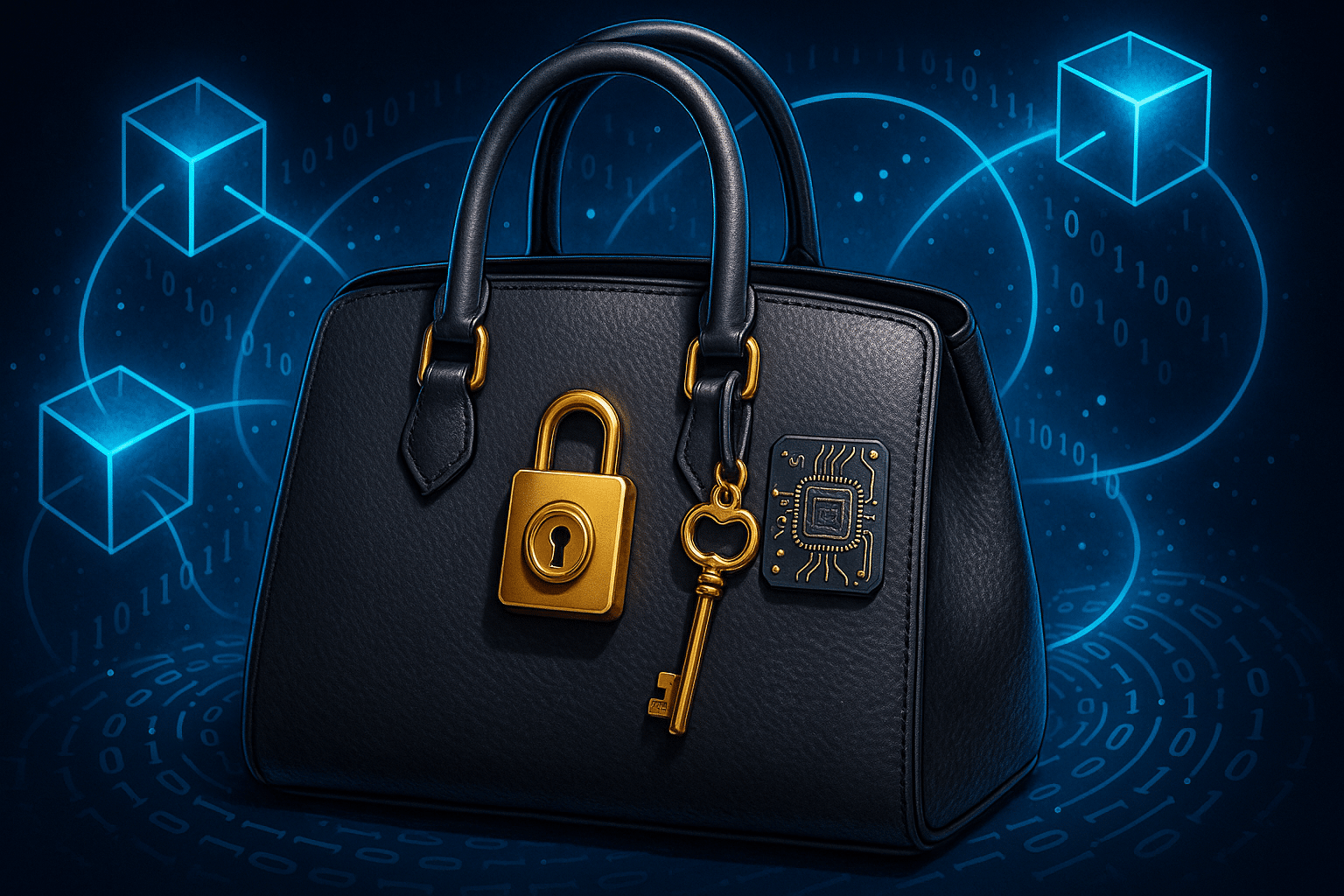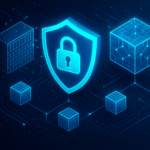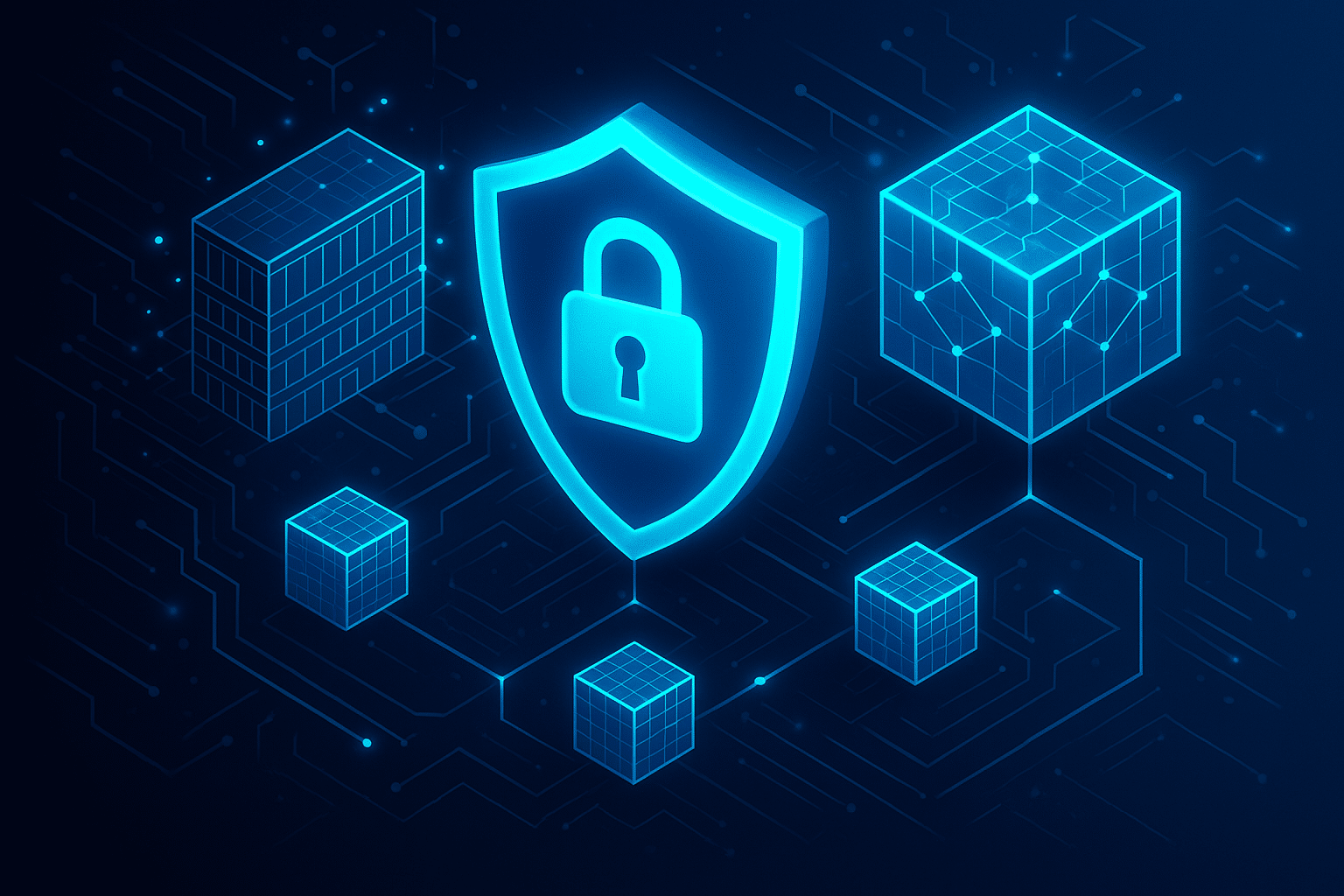Luxury Goods Authentication Tokens: How Blockchain Protects High-End Fashion and Collectibles
Luxury world is trust-based. When one buys a Gucci bag, Rolex watch, or Louis Vuitton wallet, he or she has the confidence based on the knowledge and understanding that it is genuine. Value is represented by the quality of the style, the logo, the craftsmanship, all that combined. But when the fake luxury market came up with fakes, the trust was cut off. Regrettably, counterfeiting has turned out to be a multi-billion-dollar business.
According to reports from 2025, counterfeit luxury goods alone are estimated to cost brands over 400 billion dollars in lost sales annually. Counterfeiting has become an international issue with fake designer clothes and imitated watches. The counterfeiters are using advanced printing and e-commerce techniques at their disposal, and hence imitations are very hard to spot, and this leaves the consumers and the brands in jeopardy.
Another approach was used in the past, where luxury brands were using a serial number, paper certificates, or unique packaging, and although brands were immensely proud of their capability to prevent counterfeiters by such means, the vast majority of these security measures were reproducible or lost. The introduction of blockchain technology is the place where there is more opportunity to change. Through the development of authentication tokens, luxury brands will now be able to offer an identification of all legitimate products being linked to a digital record that cannot be replicated or modified.
These tokens are helping rebuild trust. They give proof that a product is genuine. They also make it possible to track an item from the moment it is made until it is sold again in resale markets. This blog explains how these luxury goods authentication tokens work, why brands are using them, and what the future looks like for digital proof of luxury ownership.
What Are Luxury Goods Authentication Tokens
Luxury goods authentication tokens are like a digital passport for high-end items. They demonstrate that a product is not a duplicate. The tokens are identifiable such as a fingerprint and are stored safely in a blockchain network.
A luxurious brand sets a new bag, watch or jewelry and gives it a token. The brand name, date of manufacture, materials and serial number are some of the information contained in this token. This information is then written on the blockchain, and it cannot be altered. The token is kept with the item in the course of its life.
In the case of the sale of a product, the ownership of the token also changes. This will aid in monitoring the actual owner and preventing the entry of fake products into the market. The system is not complicated, but solid in usage. Any person who swipes or counterchecks the token can prove that the product is authentic.
Luxury goods authentication tokens are bridges between the online and the real world. They ensure that all products of luxury can be checked anytime. And since the blockchain is transparent and public, it is difficult to cheat the system.
How Blockchain Helps Verify Luxury Items
Blockchain is a digital record-keeping system that allows you to store information securely in blocks. When a block is inserted in the information chain, it cannot be erased or modified. The blocks are linked to the succeeding information. This is what renders blockchain credible to authentication.
Any luxurious item can create a record that captures all the noteworthy features of the product with regard to the user. The record can contain details on the object including identification, place of production, and ownership. Each time a luxury commodity is bought or sold among the owners, we will have a new entry in the book of records and we will be able to construct the whole history of disposition between factory and customer.
Traditional certifications can be lost or counterfeit. The information in blockchain is indefeasible. The token generated about the luxury product can be viewed and tracked by the public, which is completely stored on the blockchain. Thus, the consumer who bought the Prada bag or Rolex watch will simply have to check the authenticity with the help of the blockchain in case they wish to do so.
Here’s a simple comparison to show the difference:
|
Feature |
Paper Certificate |
Blockchain Token |
|
Security |
Easy to forge |
Almost impossible to fake |
|
Storage |
Can be lost or damaged |
Stored permanently online |
|
Transfer |
Manual and slow |
Automatic and verified instantly |
|
Transparency |
Limited to seller |
Visible to everyone |
|
Cost |
Extra management cost |
Low digital cost |
Blockchain makes luxury verification more reliable. It keeps every product’s truth in one safe place. This system gives brands protection and gives customers confidence that what they are buying is genuine.
Why Brands Are Adopting Authentication Tokens
Luxury brands have always been in battle against imitation products. Over the past few years, most individuals have turned to authentication that is based on blockchain as it comes with permanent solutions and not short-term solutions. Digital trust is replacing physical beauty in the luxury market as much as physical beauty is, hence the rapid transition.
The brands that are included in the Aura Blockchain Consortium are Prada, Cartier, and Louis Vuitton. This technology assigns a digital identity to each product and allows consumers to check it at any time. It allows a buyer to determine the date, place of creation and resale of the item.
In the case of luxury houses, it is not only about prevention of fakes. New business opportunities are also created by authentication tokens. Indicatively, when a product is sold in the resale market, the brand continues to remain as part of a transaction. That preserves its worth and relationship.
Here’s a small look at how popular brands are already using this system.
|
Brand |
Blockchain Partner |
Product Type |
|
Prada |
Aura Consortium |
Fashion |
|
Cartier |
Aura Consortium |
Jewelry |
|
LVMH |
Aura Consortium |
Handbags |
|
Vacheron Constantin |
Arianee |
Watches |
|
Breitling |
Arianee |
Chronometers |
These brands have seen that authentication tokens help keep their heritage safe. Buyers feel proud knowing their product has a digital record from the official brand. It’s also helping younger buyers, who are used to digital items, feel more connected to luxury ownership.
Another reason for this move is sustainability. Numerous brands are now demonstrating how the materials for their goods and products are sourced and produced with blocks. This can offer proof of ethically sourced and manufactured products, which is very important to modern luxury consumers today.
How Luxury Goods Authentication Tokens Work
Luxury goods authentication tokens have a simple yet effective process. The objective is to connect each physical item to a digital identity that is ultimately stored forever as part of the blockchain. This digital identity will travel with the product as it crosses owners or geographical locations. The process can be divided into three general facets: the creation of a digital ID, the linking of a token to the ID, and the transfer of ownership.
Digital ID Creation
Every luxury item is produced with a unique digital ID. When a bag, shoe, or watch is produced, its specifications are captured in a digital record. Digital records may include aspects ranging from the specific materials used, color, model number, place of manufacture, and even the code of the artisan. These records are retained in the blockchain immediately, establishing the product’s digital fingerprint.
This means that even if a brand produces hundreds of the same model, no two products will ever be identical because each item is associated with an ID. No two identical items will ever have the same digital signature.
Token Linking
After the ID is created, it gets linked to a blockchain token. This token acts as proof of authenticity. To make the connection real-world, brands use methods like QR codes, NFC chips, or even microchips stitched inside the product. When someone scans the code, they can see the digital record on the blockchain. The connection between the physical product and digital record is what makes counterfeiting extremely difficult.
Ownership Transfer
Once the item is sold, the ownership information is also updated on the blockchain. The token now shows the new owner. This process repeats every time the product changes hands. No paperwork is needed, and ownership can be confirmed instantly.
The steps can be seen in this table below.
|
Step |
Description |
|
1 |
Digital ID created for each product |
|
2 |
Token recorded on blockchain |
|
3 |
Linked to physical item using chip or code |
|
4 |
Ownership updated during resale or transfer |
|
5 |
Record stored permanently for verification |
This system builds a clear and permanent history for every luxury product. It keeps both the brand and the customer protected. And since blockchain is shared publicly, any person can verify the authenticity without needing to trust only the seller.
Benefits of Authentication Tokens for the Luxury Industry
Luxury brands have started seeing big results from using authentication tokens. These tokens are not only protecting brands from fake products but also changing how customers interact with their purchases. The system brings transparency and long-term value for both buyers and sellers.
The first major benefit is that authentication tokens prevent counterfeit products from proliferating. When each product is assigned a digital ID on blockchain, a counterfeit version cannot be created. The blockchain record demonstrates where the product originated and verifies that it is original. This provides buyers with peace of mind while also strengthening the brand’s reputation.
The second advantage is customer trust. Customers increasingly demand to know where their products come from and how they were created. Blockchain records allow marketers to show consumers the whole lifecycle of a product, from conception to delivery. Allowing customers to see that information for themselves fosters trust and enhances the possibility of repeat purchases. Another advantage for customers is openness in resale markets.
Watches, shoes, and purses are among the many luxury items traded and resold in secondary markets. When each of these products has a blockchain record, the buyer in the resale market can check its history before committing to buy.
This adds value to the secondhand market and encourages more customers to purchase authentically. The final big benefit is that it allows firms that believe in sustainable and ethical fashion practices to demonstrate how they obtain their materials, where they manufacture their products, and how they compensate their employees. This enables brands to communicate data in order to meet sustainability goals while also providing consumers with trust in the products they purchase.
Real-World Examples of Authentication Token Projects
The shift towards authentication tokens is no longer theoretical. Numerous prominent blockchain and luxury consortia projects are fully functional and ongoing around the world.
The, Aura Blockchain Consortium, founded by LVMH, Prada and Cartier provides the largest consortium in terms of legacy luxury in existence, using a blockchain to provide an unverifiable certificate of authenticity for each product. Customers then scan along with being able to even verify real time data of the product’s journey along with sourcing of materials. Aura Blockchain Consortium also connects to resale markets so that second-hand purchasers are receiving verified goods as well.
Another successful project is Arianee, an open blockchain platform utilizing digital identity protocols for luxury products, watch brands such as Vacheron Constantin and Breitling use Arianee to record ownership. Arianee’s open standard makes it simple for brands to adopt, without them having to build new, unique infrastructure.
VeChain is also known for helping track supply chains of luxury products. It places small chips in physical goods that connect to blockchain records. This helps detect fake products even before they reach the market.
Conclusion
Luxury good authentication tokens are changing how consumers think about ownership. They allow the user to prove the authenticity of an item and assist in linking the physical experience to the digital experience. This tokenile system protects brands from counterfeit items and adds confidence to customers that their items are authentic.
Leading luxury brands like Prada and Cartier are ushering in this shift. Blockchain technology has made the verification process safer, more efficient, quicker and more verifiable. Buyers will be able to verify the physical and digital histories of a product in seconds using a simple scan instead of relying on the traditional paper system.
Although there are still barriers, including cost, privacy aspects and education, the direction is clear. The luxury market is embracing a digital future where every product sold will have a verifiable identity.
The idea of using authentication tokens will continue to expand and we will all see a future where every handbag, watch or pair of shoes has a digital twin that tells its story. This is what luxury will become: an increase in transparency and trust in what constitutes exclusiveness and uniqueness.
Frequently Asked Questions
What is a luxury goods authentication token?
A luxury goods authentication token is a digital certificate that proves a product is real. It is stored on blockchain so that no one can copy or change it.
How do these tokens stop fake products?
Each product has a unique digital ID that lives on blockchain. Fake items can’t copy this record, so buyers and brands can confirm authenticity instantly.
Which luxury brands are using blockchain for authentication?
Big brands like Louis Vuitton, Prada, Cartier, and Breitling are already using blockchain-based authentication systems.
Are NFTs and authentication tokens the same thing?
They are similar but slightly different. NFTs represent digital ownership, while authentication tokens connect directly to real physical items.
Is blockchain authentication safe for buyers?
Yes. Since blockchain records cannot be changed, it’s one of the safest ways to verify product authenticity and track ownership history.
Will all luxury brands use tokens in the future?
Most likely yes. As the technology becomes cheaper and easier, more brands will use blockchain to protect their designs and improve customer trust.
Glossary
Blockchain: A digital ledger that keeps records safe and transparent. It is made of connected blocks that store data permanently.
NFT (Non-Fungible Token): A unique digital asset that represents ownership of something special, often used in art and fashion.
Authentication Token: A digital proof stored on blockchain that confirms a luxury product is real.
Digital Twin: A virtual copy of a physical product used for tracking and verification.
Smart Contract: A program on blockchain that runs automatically when certain conditions are met.
Aura Blockchain Consortium: A group of luxury brands using blockchain to verify authenticity, including LVMH, Prada, and Cartier.
Summary
Luxury goods authentication tokens are revolutionizing the way the fashion and luxury industry addresses authenticity. These electronic certificates, built on the blockchain technology, render any counterfeit scenario virtually impossible. They increase trust in resale marketplaces, lead to more sustainable practices, and help develop a stronger relationship between brands and their customers.
With projects like the Aura Consortium, Arianee and VeChain leading the charge, the luxury industry is moving toward a transparent future. Yes, while the technology is still emerging, the opportunity is and can be endless. Soon, there will be many more social networking platforms, And, electronic certificates for every designer bag or high-end watch, if that’s how you want to remember it with digital identity, which could include everything we know about the object from the workbench of the craftsperson to the purchase.
Read More: Luxury Goods Authentication Tokens: How Blockchain Protects High-End Fashion and Collectibles">Luxury Goods Authentication Tokens: How Blockchain Protects High-End Fashion and Collectibles



